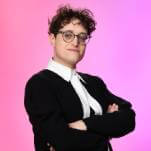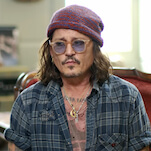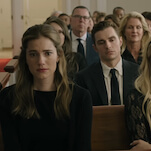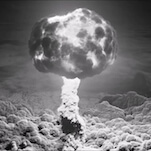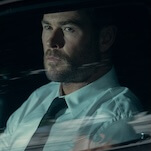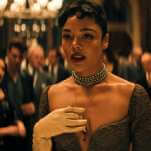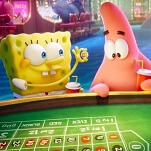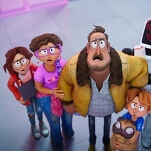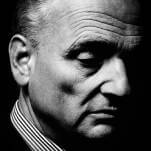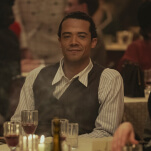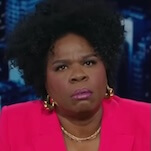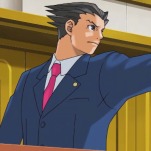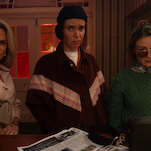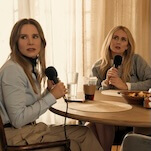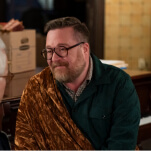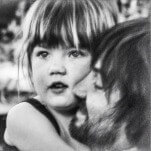The height of Jim Henson’s collaborative efforts with composer and inventor Raymond Scott, “Limbo: The Organized Mind” brings to life Henson’s fascination with the interworkings of the brain, all the while indulging the many experimental impulses of its two creators. Presented in various forms throughout the 1960s and ’70s, the piece combines puppet and film work by Henson with an eerie, ethereal slice of musique concrète from Scott.
It’s curious that so many of Henson and Scott’s collaborations revolve around thought processes. Scott’s scores for “Ripples,” “Wheels That Go,” and the IBM industrial film “Paperwork Explosion” (and even “Memories,” an abbreviated adaptation of “Limbo: The Organized Mind” used to advertise pain medication) show a knack for getting inside Henson’s writing and photography—yet both approached their work from decidedly different angles. For Henson, cooperation (It makes it happen!) was key: The perspectives and input of other artists widened the horizons of his Muppet and non-Muppet work alike; notice that a puppet as simple as “The Organized Mind”’s Floating Face requires the assistance of Dave Goelz. Scott, on the other hand, sought to eliminate the role other played in realizing his compositions. After coming to prominence as a composer and bandleader during the swing era, his work in the electronic music field looked toward a future where all the sounds of a big band could be produced by a single machine. The refrain of “Paperwork Explosion” could be a professional credo for Scott’s Manhattan Research Inc.: “Machines should work. People should think.”
Of course, if you compare the trajectories of Henson and Scott’s careers following their collaborations, it’s apparent that Scott could’ve benefited from an own organized mind. His magnum opus, an “automatic composition and performance machine” dubbed The Electronium, went uncompleted in its creator’s lifetime, a fascinating folly ultimately neglected and stripped for parts in favor of contemporaneously developed Scott inventions. While Scott tinkered away in his workshop, Henson experienced his own share of setbacks—but managed to find enough focus (and willing co-conspirators) to finally find a pair of long-term television homes for The Muppets. And though Scott was not to be one of those co-conspirators—there’s no documented reason for the partnership’s dissolution, though it’s worth noting that the early seasons of Sesame Street coincide with Scott’s deepest engagement with The Electronium—it’s easy to trace a thread back to Henson’s connection with the mad musical scientist any time The Muppet Show brushes with the bizarre and the avant-garde. Like much of his work, Scott’s collaborations with Henson were ahead of their time. The 1974 Tonight Show performance of “Limbo: The Organized Mind” in an odd choice for promoting The Muppets Valentine Show; however, it would’ve been right at home with the esoteric antics of Mummenschanz.
“With our special guest stars”: In his introduction of Mummenschanz, Kermit describes the European pantomine troupe as “distant cousins to The Muppets.” Considering the squishy, full-costumed creations Andres Bossard, Floriana Frassetto, and Bernie Schürch show off in the middle of the episode, the frog is right on the money. But the connections between the two groups go depper than that. Like The Muppets, the members of Mummenschanz—who taped their appearance on The Muppet Show mere months before beginning a three-year stint on Broadway—bring a wild sense of play to their spotlight segments, enlivening abstract masks and formless pieces of foam through movement alone. The Muppet performers had the advantage of giving voices to their characters, but the two longer scenes presented here by Mummenschanz still manage to elicit big laughs. And they’re the rare “guests only” segments that manage to be as entertaining as a solid Muppet segment like, say, Episode 124’s library sketch; in fact, the way they’re presented on the show, they’re not far removed from classic Muppet sketches like “Java” or “Inchworm.” The troupe’s absolutely bonkers Talk Spot—wherein Bossard, Frassetto, and Schürch make up for their silence with a few hidden talents—even provides a fond farewell to that segment’s status as an every-episode staple of The Muppet Show.
“The most sensational, inspirational, celebrational”: Of course, for all Mummenschanz manages to achieve in this episode, it would be a cheat to give this distinction to pieces which weren’t conceived specifically for the show. As such, that aforementioned library sketch deserves some praise, if only for the way it echoes and tweaks Mummenschanz’s silent performance style. It’s a one-joke premise—after disapproving of Fozzie, Miss Piggy, Hilda, and Nigel’s noisy tics, librarian Zelda Rose solves her problem by arranging those noises into a rendition of “The Blue Danube”—but it’s a doozy of a joke. The show’s Foley artist does the heavy lifting (no way Hilda’s rustling newspaper was picked up by the mics on set), but the Muppet performers build the energy nicely—right to the appearance of Wayne and Wanda, who put a button on the scene by waltzing directly into a bookshelf, thereby breaking Zelda’s cultivated chaos.
“It’s like a kind of torture to have to watch the show”: With blackouts and the Talking Houses phased out (and the Muppet News Flash finding its feet), it’s up to Vendaface to fill time by socking Statler in the face. According to the “Muppet Morsels” feature on the season-one DVD set, Vendaface became a recurring bit to justify the cost of building such a complex puppet/prop, but the punchline here, as it were, is sub-At The Dance stuff.
“It’s time to play the music”: Written and recorded by one-time teen sensation Johnny Cymbal in 1963, the two roles at the center of “Mr. Bass Man” couldn’t be more perfect for Floyd Pepper and Scooter. The song requires Jerry Nelson to drop into a lower register than the one which railed against The Muppet Show’s theme song in Episode 123, though Richard Hunt sings the lead vocal as if Cymbal wrote it for Hunt’s eager gofer. Scooter’s tried to break into showbiz in a number of other roles so far—why wouldn’t he try his hand at holding down the low end for a doo-wop group as well? The song even earned the character a chance at fame outside The Muppet Theater, one suited for the unsung, “hidden king of rock ’n’ roll”: The B-side of the 1977 “Mahna Mahna” single.
“It’s time to raise the curtain”: The cheapness of the “Vendaface” sketch aside, it and the interlude where Statler helps inflate Waldorf’s collapsed face speak to how well the Muppet performers grew to know their puppets over the course of these first 24 episodes. It’s easy to imagine Henson and Hunt goofing around with the characters one day, inadvertently discovering how malleable their facial features were, and thinking “We’ve got to write that into a script!”
“It’s time to meet The Muppets”: Without Camilla the Chicken in his life, Gonzo The Great is left to start a romantic thread that wouldn’t be fully realized until the debut of Muppet Babies: his crush on Miss Piggy. These emotions feel undercooked in a way that, say, Piggy’s fondness for Kermit rarely does, but that might just be a side effect of their sudden appearance in what’s nevertheless a funny runner. It’s especially entertaining to see Piggy on the opposite side of an unrequited romance, though her reaction is consistent no matter which side of the equation she’s on: tons of physical violence.
“It all ends in one of two ways”: In a preview of trumpet gags to come (and a repeat of the gong gag from the Vincent Price episode), Gonzo unloads a horn-like blunderbuss at the big “O.” Later, in an acknowledgment of At The Dance’s hit-or-miss prospects, two Whatnots let the segment go out with a pair of bangs.
Next week: Season-one coverage ends with a look at how The Muppet Show: Sex And Violence and The Muppets Valentine Show shaped the show that was to come.


